
by Amber Dubin
As we close in on the end of the final year of the 60s, it seems the lengthening nights are seeping into my psyche more than usual. I find myself wishing I were more hopeful for the coming of a new decade, and maybe if I paid less attention to politics or the state of the world I could retain more resistance to the gloomy morale of our divided and unrested country. Thankfully, a timely distraction arose: just think how pleasantly surprised I was to discover that there was to be a diverting new work from Rod Sterling to grace our airwaves November 8, 1969!
I was a step beyond devastated when Twilight Zone left the air, as it remains one of my all-time favorite science fiction pieces to date. To know that Rod Sterling would once again be on my television just before the dawn of a new decade sparked a hope in me that’s just enough to disrupt the gloom I’m feeling at the end of this one.
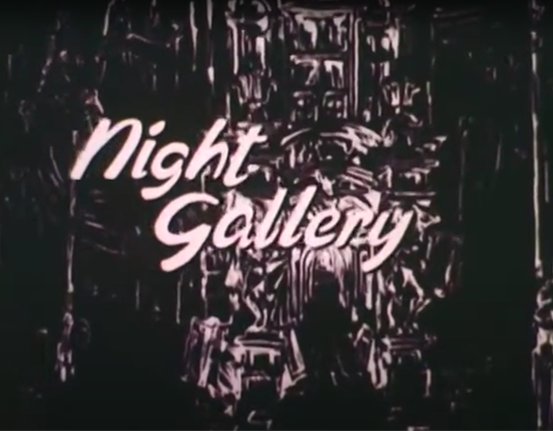
Rod Serling's "Night Gallery", shown on NBC Saturday Night at the Movies
Given the climate of our cultural atmosphere, however, I am not surprised that although the work that Rod Sterling chose to create is star-studded in cast, it is otherwise physically and emotionally dark. The macabre tone sets in right away as an eerie opening theme tinnily whines from the upper register of a harpsichord. The audience is led down a black and white drawing of a hallway, interrupted regularly by the chalky outlines of featured actors, not unlike how it would feel if one were to walk through a series of taped off crime scenes with final resting places similarly marked in each. This tense opening sequence maintains stress on the audience as the illustration gives way to the darkly enshrouded silhouette of the show’s host and final name featured in the credit sequence, Rod Serling.
Serling returns to the small screen, six years after he left it, in the resolute and deliberate fashion we’ve come to expect from him. Ever our guide through the mysterious and strange, he acts as curator of the mysterious in a black void of a presentation room featuring nothing but three portraits, their faces glamorously shrouded in red velvet curtains. He describes each of these covered works of art as suspended “in time and space, a frozen moment of a nightmare.”
Entering the scene associated with the first painting, "The Cemetery," this description is immediately validated as we are confronted with a room occupied by a once wealthy patriarch, bound both by a wheelchair and the living death that is the cognitive and physical decline of age. The elderly man, Mr. Hendrix, is waited on with care by famed film and TV veteran Ossie Davis (Mr. Ruby Dee), playing the sharply dressed and precise butler Osmond Portifoy. In a heartbreakingly relatable way, the rich and ailing painter is depicted as incapable of speaking, walking, or even holding a paint brush as he barely clings to life in his old-monied estate home. By contrast, we are confronted by his shiftless rapscallion of a nephew downstairs, who we are made to immediately dislike as he twitters about the house, disrespectfully upsetting its previous order and chirping our patient butler’s name in mockery as he puts his cigarettes out on the tray of discarded food he is carrying away from Mr. Hendrix’s room.
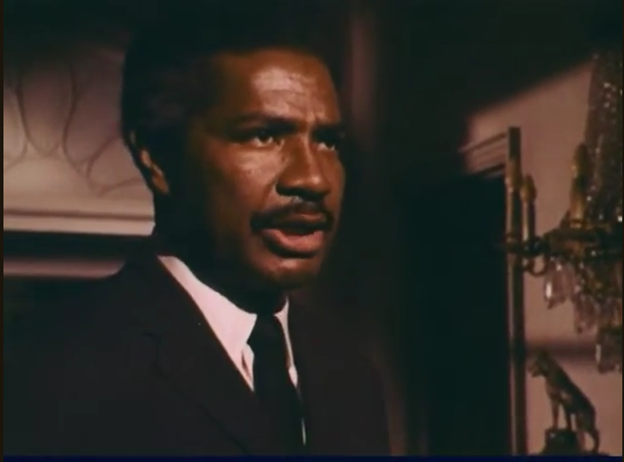
Portifoy is not amused
The obnoxious youth wastes no time in murdering his uncle once he has confirmed his inheritance of his estate, brazenly directing his uncle’s view to the window overlooking the family cemetery so the poor man can ‘view his future residence’ as he is slowly poisoned by the cold air from the purposely opened window that his frail body is unable to withstand. The greedy nephew makes no attempt to hide his disrespectful glee when the man dies, and he rudely directs the responding home-doctor and estate manager to hastily clear away as many traces as possible of the deceased man’s control over his wealthy home. Condescendingly, he allows Butler Portifoy to stay on staff, despite their obvious and open distaste for one another. However, Portifoy finds it almost more curse than blessing that he is allowed to continue to serve the Hendrix Estate under new management.
Just when it appears nothing could stop the young man’s wonton disrespect for all things dignified, his drunken carrying on hitches on a disturbing detail he notices in one of his uncle’s paintings hanging over the hallway stairs. When his uncle is interred in the family cemetery, it appears that the estate painting changes to depict an open grave in the corresponding area of the portrait. At first, he tries to brush off this change as a trick of the light, or his faulty memory, but the more time he spends in the home, the more fixated he becomes on the painting. When his paranoia grows to the point of inducing sleeplessness, he lashes out, ripping it off the wall and throwing it into the fireplace, only to find it back on the wall where it was before. He responds with violence to Portifoy’s insistence that there is nothing wrong with the painting and burns the man, finally breaking the man’s tolerance for his behavior. Portifoy quits on the spot, leaving the younger man to continue swiftly losing his mind alone in this apparently haunted house.
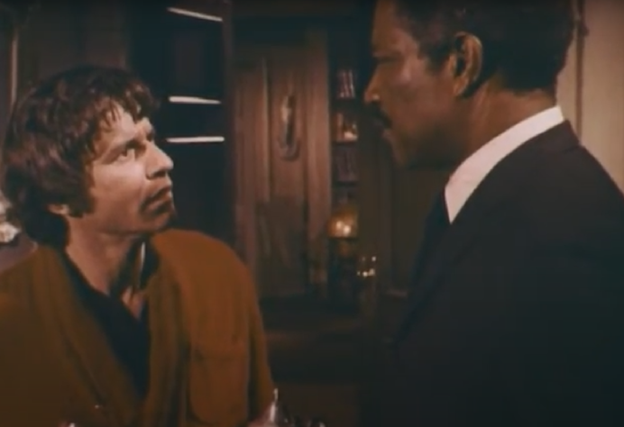
A rather satisfyingly contentious dynamic
In predictable fashion, the man fares poorly on his own, and he eventually succumbs to the battle with the paranormal forces at play, launching himself off the staircase entangled in the canvas of his dead uncle’s likeness. To my surprise, however, this is not where the story ends, and it appears that the doomed youth was not the only man in the house compelled by greed and willing to play with paranormal forces he did not understand. It's a twist too good to spoil here.
The second story, “Eyes,” features the fascinating combination of a winning performance by storied actress Joan Crawford and the professional debut of a young director named Steven Spielberg. Although it was rumored that this segment’s veteran star was originally reluctant to take a chance working with the inexperienced director, it appears her fears were unfounded. In fact, I’d go so far as to say that the direction of this segment was Rod Serling’s best choice of the featured three. From the elevator door closing on Joan’s character’s disgruntled employee as we open the scene, to the acrobatic shots we get from the ceiling looking through chandelier crystals, the cinematography and dynamic story telling are movie-quality.
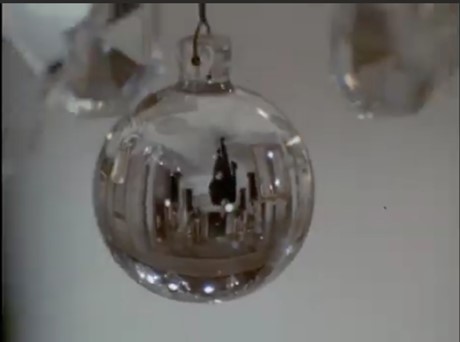
An ambitious shot that inverts the surgeon as he has inverted his moral code.
The story in question revolves around the aging debutant Miss Claudia Menlo, played by Joan Crawford, whose nightmare appears to be the life-long curse of blindness. It seems as if the finery she surrounds herself with and the technology with which she’s been able to make her life self-sufficient has steadily transformed into bars of a gilded cage. She has become so obsessed with the idea of the sight that she has been robbed of, that she interprets it as a cruelty that she must turn into a weapon to settle the score. It is from this space that she discovers an opportunity to right the universal wrong, and she stops at nothing to seize it.
Through the perspective of the conscripted surgeon, we discover that Miss Menlo has bribed, extorted and blackmailed enough professionals and poor slobs to direct a procedure to take place where one man will lose his vision forever to give her but twelve hours of precious sight. It’s clear we are meant to condemn Joan Crawford's character’s actions, and to be sure her victim is pathetic enough to deserve all of one’s compassion, but I cannot help but understand her desperation. Yes, her vanity, decadence and aggressive way of tearing through everything that gets in her way is indefensible, but it’s hard to say if given the same circumstances I wouldn’t make similar choices. As a senescent ice queen of an empty decaying palace, the woman that life has made of her is twisted into an unlovable shape now, but I cannot help but imagine what torture it must have been to live a whole life of such beauty without the ability to see any of it.
No matter how thoroughly we are meant to have shut her out, I cannot help but feel a pang of ache when she screams about color, while decorated in such fine examples of the same. I understand the bad intentions she paved to her own destruction, but when the irony she earned comes to call, I cannot fully say it would have been a doom I could have avoided myself.
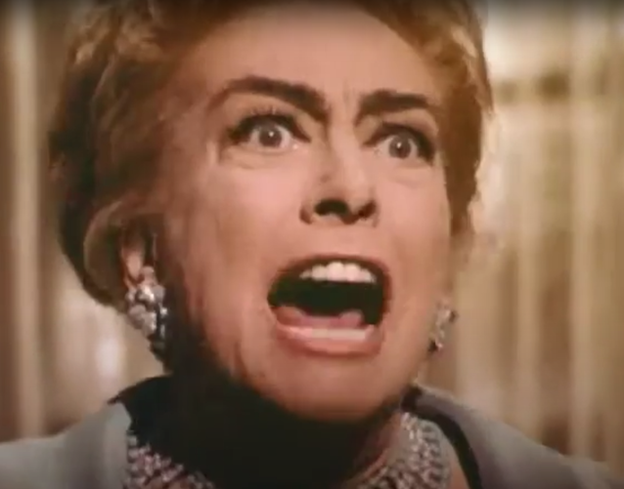
I am always hesitant to call a woman a nightmare, but when the shoe fits…
The last story for me is the weakest of the three. “Escape Route” features an ex Nazi officer from a concentration camp hiding out in Buenos Aires after the end of World War II. As many men with this description did (do?) in real life, he is haunted by paranoia of being found and held responsible for his cruelty and past actions as he lives a life of poverty and insignificance in a foreign country he does not seem to enjoy any aspect of. I felt like this had the least compelling premise because even if he wasn’t a war criminal, the protagonist seems to be a completely irredeemable, unlikable nightmare. While he is haunted, he appears remorseless and even defensive of his past behavior. It also seems to have turned him into a miserable, belligerent drunk who verbally abuses the only person in his life that knows his secret: his consistently drunk, lady-of-the-night neighbor. Even though she is the only one who seems to tolerate him, she still uses his secret to twist the knife of insults she slings right back at him.
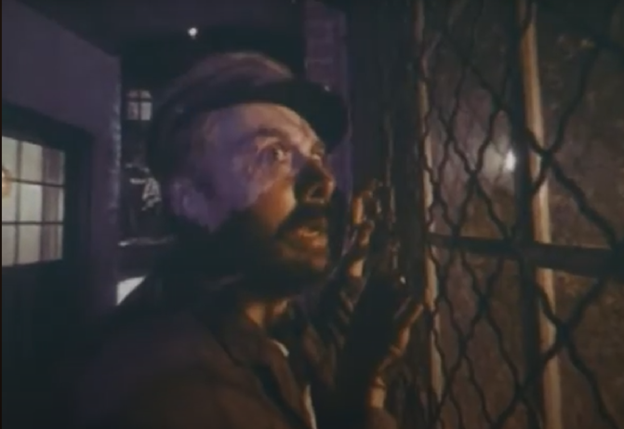
A well-deserved haunting
One day, in hiding from the detectives attempting to get him to answer for his crimes, he seeks refuge inside a closing museum and is unexpectedly moved by a painting of a fisherman who he hallucinates as having his face. It is here that his personal moment is interrupted by an elderly Jewish man emotionally connecting with another painting that expresses the agony of a holocaust victim. Based on how often he is drunk and/or hallucinating, I am not entirely convinced that the other man, Herr Bleum, isn’t a physical manifestation of the ex-Nazi’s guilty conscience.
In fighting against the web of his own weaving, he predictably hangs himself, using the thread of magic he has discovered in his story to yoke himself to a punishment far worse than any he could have received at the hands of real-life avengers.
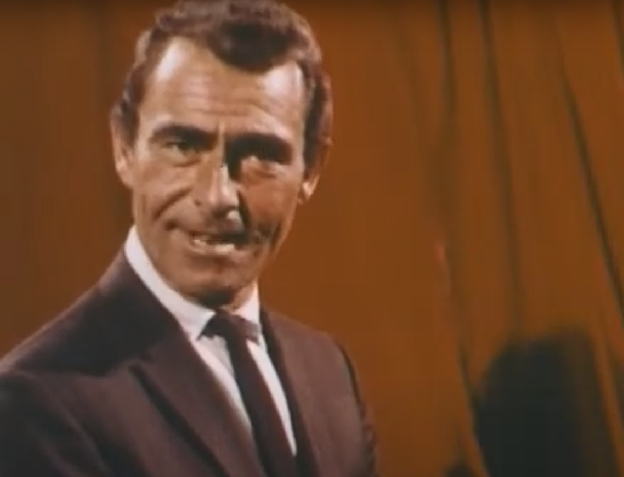
Rod Serling, in all his glory
Whatever unevenness exists in this trio of stories is overwhelmed by the sheer quality of production, and also the joy at having an old master back at the game. The gilded tapestry Rod Serling has woven with The Night Gallery is a welcome masterpiece capable of warming my heart in these cold and dark winter months. The papers say that Serling is uninterested in serialized television work after Twilight Zone, and that these three episodes were a one-off set. However, after turning out such well-crafted, well-acted and well-directed gems as these, I cannot imagine this vignette not inspiring a sequel or two in the coming decade, either penned by Serling or a successor he designates. That hope alone gives me something to look forward to as the curtain draws this year to a close.
5 stars
[New to the Journey? Read this for a brief introduction!]

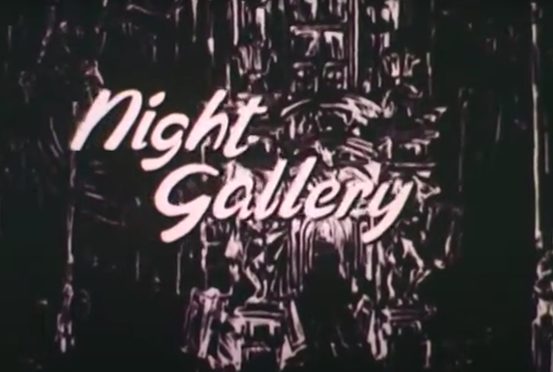


Fine review.
This was quite good for TV, and quite dark in tone. Serling is showing his love of "Weird Tales" and other chillers.
At home, we find ourselves saying "Portifoy" and "I wept, I truly wept" in poor imitation of Roddy's accented performance.
Thank you, Victoria! That's an interesting idea: Weird Tales coming to TV.
Great review. A pleasure to read. I had never considered the reflectedinverted shot as you did. Great catch you made Just two typos: you refer to Serling returning to the silver screen. Silver screen is a nickname for motion picture screens. I think you meant a return to the small screen. And it is Steven Spielberg, not Stephen.
Thank you for the edits, Dave!